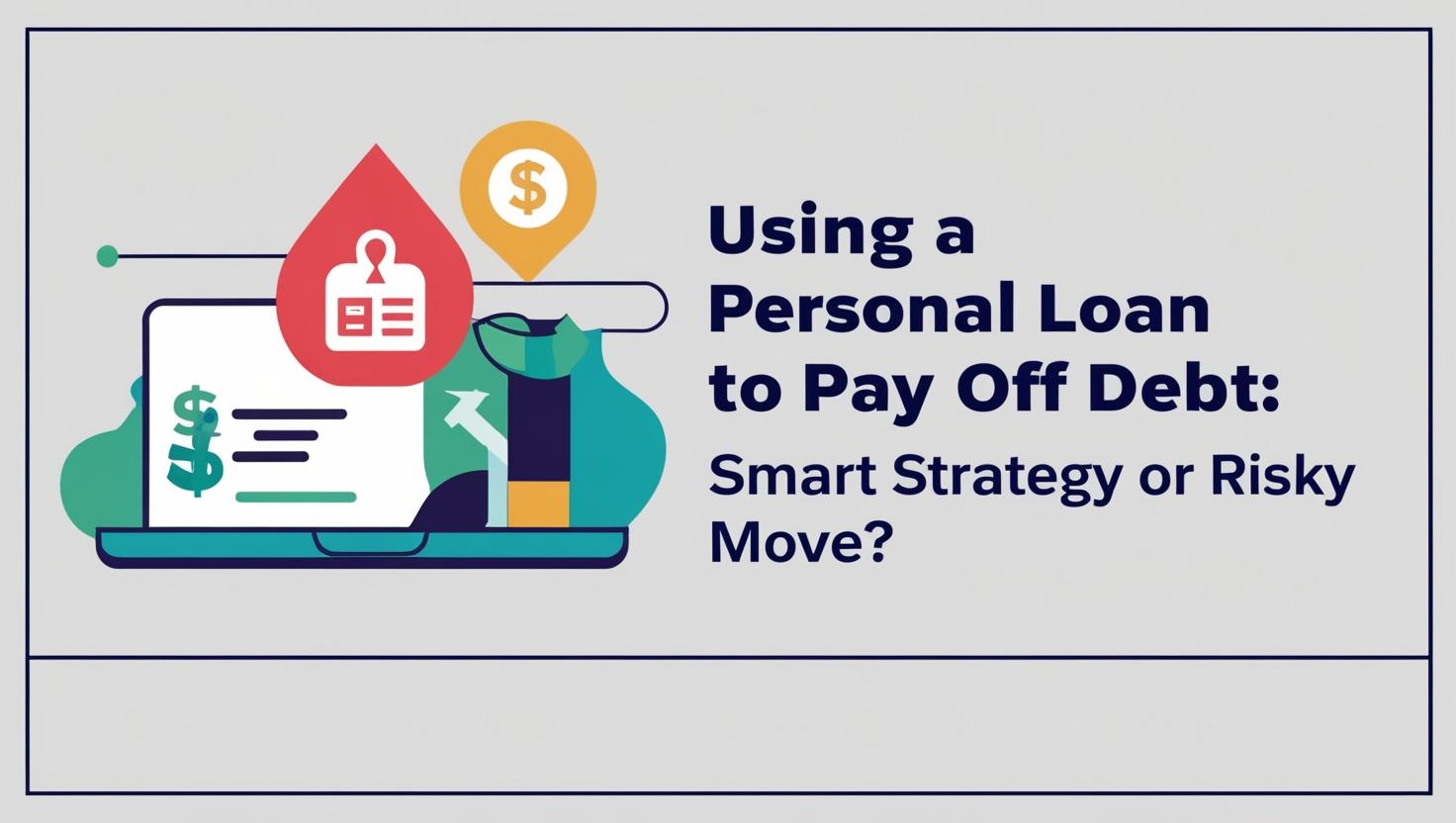Retirement savings secures your financial future. Whether you’ll have the freedom to enjoy life without financial stress? Planning for the future might seem overwhelming, but it doesn’t have to be. With the right steps, you can build a solid foundation for the years ahead.
Starting early is one of the most powerful moves you can make. Even small contributions can grow significantly over time, thanks to the magic of compound interest. Think of it as planting a tree—the sooner you start, the stronger it grows.
Your employer can also play a key role in helping you achieve your goals. Many companies offer plans like 401(k)s, which allow you to save while taking advantage of potential employer matches. It’s like getting free money for your future!
By creating a clear plan and sticking to it, you can turn your dreams into reality. This guide will walk you through the essentials, from understanding your options to making the most of your resources. Let’s get started on building your nest egg today.
Key Takeaways
- Starting early maximizes the benefits of compound interest.
- Employer-sponsored plans can significantly boost your savings.
- Small, consistent contributions lead to substantial growth over time.
- Having a clear plan helps you stay on track to meet your goals.
- Understanding your options is the first step toward financial security.
Introduction to Retirement Planning
Taking control of your financial future starts with understanding your options. Even if it feels far away, planning now can make a big difference later. Your current job and income play a key role in shaping your future financial security.
One of the most important steps is understanding how social security works. For example, claiming benefits early at age 62 reduces your monthly amount, while waiting until age 70 can increase it. Knowing these details helps you make informed decisions.
Investments are another critical piece of the puzzle. Whether it’s stocks, bonds, or mutual funds, learning the basics can help you grow your money over time. The earlier you start, the more you can benefit from compound growth.
Your employer can also be a valuable resource. Many companies offer plans like 401(k)s with matching contributions. This is essentially free money that boosts your benefit in the long run. Taking advantage of these opportunities is a smart move.
Understanding Your Financial Future
Your financial future depends on the choices you make today. Start by assessing your current income and expenses. This helps you identify how much you can set aside for the future. Even small amounts can add up over time.
Social security will likely be part of your plan, but it’s not enough on its own. Combining it with personal investments and employer-sponsored plans creates a more secure foundation. The goal is to replace 70% to 90% of your pre-retirement income.
Getting Started with a Savings Roadmap
Creating a roadmap is essential for staying on track. Begin by setting clear goals and breaking them into actionable steps. For example, aim to contribute at least 15% of your income to a 401(k) or IRA.
If your employer offers matching contributions, take full advantage. This is a benefit that can significantly boost your savings. Additionally, consider diversifying your investments to manage risk and maximize growth.
By taking these steps, you’re building a solid foundation for your financial future. Start today, and you’ll thank yourself later.
Understanding Your Retirement Goals and Lifestyle
What kind of life do you envision for yourself in the future? Whether it’s traveling, spending time with family, or pursuing hobbies, your goals will shape your financial plans. Start by thinking about the lifestyle you want and how much it might cost.

Identifying Income Needs
Your income needs will depend on your age and how many years you expect to live. For example, a 65-year-old man might live another 21 years, while a woman could live 24 years. This means you’ll need enough funds to cover decades of expenses.
Experts suggest aiming to replace 70% to 90% of your pre-retirement income. This ensures you can maintain your lifestyle without financial stress. Start by calculating your current expenses and projecting how they might change.
Mapping Out Future Expenses
Healthcare, housing, and daily living costs are major expenses to consider. As you age, healthcare costs often rise, so it’s important to plan for these in advance. Housing might also change—whether you downsize or stay in your current home.
Creating a detailed budget helps you understand where your funds will go. Break down your expected costs by category and adjust as needed. This gives you a clear picture of what you’ll need to save.
By setting clear goals and understanding your future needs, you can create a plan that works for you. Start today, and you’ll be better prepared for the years ahead.
Exploring Employer-Sponsored Retirement Plans
When it comes to securing your future, your employer can be a powerful ally. Many companies offer plans like 401(k)s, which are designed to help you grow your account over time. These plans often come with matching contributions, making them a smart choice for long-term financial security.
Capturing the Benefits of Employer Matches
One of the best things about employer-sponsored plans is the matching contribution. For example, your company might match 50 cents for every dollar you contribute, up to 6% of your salary. This is essentially free money that boosts your account without extra effort on your part.
Not taking advantage of this benefit is like leaving cash on the table. Make sure you contribute enough to get the full match—it’s a simple way to maximize your long-term growth.
Navigating Job Changes and Plan Transfers
If you change jobs, it’s important to know what to do with your account. You can roll it over into a new employer’s plan or transfer it to an IRA. Either way, the goal is to keep your funds working for you in the market.
When transferring, pay attention to fees and investment options. A low-cost IRA might be a better thing if your new employer’s plan has limited choices. Staying informed ensures your security remains intact.
By understanding these strategies, you can make the most of your employer-sponsored benefits. Start today, and you’ll be one step closer to a brighter financial future.
Smart Investment Strategies for Your Nest Egg
Building a secure financial future requires smart investment strategies. The way you manage your portfolio today can significantly impact your future stability. By balancing risk and growth, you can create a plan that works for you.

Diversification and Risk Management
One of the best ways to protect your investments is through diversification. Spreading your money across different asset classes, like stocks, bonds, and real estate, reduces risk. If one area underperforms, others can help balance the loss.
For example, stocks may offer high growth potential, but they come with higher risk. Bonds, on the other hand, are more stable but may yield lower returns. A mix of both can provide a balanced approach to managing your future.
Evaluating Low-Cost Index Funds and Alternatives
Low-cost index funds are a popular choice for many investors. They track market indexes like the S&P 500 and offer broad exposure at a low cost. This makes them an advantage for those looking for steady, long-term growth.
If you’re an employee with limited time to manage investments, index funds can be a simple yet effective option. They require less effort than actively managed funds and often outperform them over time.
Another advantage is their tax efficiency. Index funds typically generate fewer capital gains, which means lower tax liabilities. This can help you keep more of your earnings for your future needs.
“Diversification and low-cost index funds are two of the most effective strategies for long-term financial growth.”
Here are some steps to optimize your investments:
- Assess your risk tolerance and investment goals.
- Diversify across asset classes to reduce risk.
- Consider low-cost index funds for steady growth.
- Take advantage of tax-advantaged accounts like IRAs or 401(k)s.
- Review and adjust your portfolio regularly.
By following these strategies, you can build a portfolio that supports your financial future. Start today, and you’ll be on your way to achieving your goals.
New Job Entrants: Building a Strong Financial Foundation
Starting your career is the perfect time to lay the groundwork for financial stability. Even if your income is modest, small steps today can lead to significant growth over time. The earlier you begin, the more you can benefit from compounding and other financial tools.
Starting with Small Contributions
You don’t need to save large amounts to make a difference. Even $50 or $100 a month can add up over the years. For example, a $100 monthly contribution invested at a 7% annual return could grow to over $100,000 by retirement age.
Many companies offer plans like 401(k)s with matching contributions. This is essentially free money that boosts your savings. If your company matches 50% of your contributions, you’re already ahead before your investments even grow.
The Advantage of Early Compounding
Compounding is the process where your earnings generate their own earnings over time. The earlier you start, the more time your money has to grow. For instance, a 25-year-old who invests $200 a month could have significantly more by age 65 than someone who starts at 35.
Here’s how you can integrate saving into your routine:
- Set up automatic contributions to your company-sponsored plan.
- Start with a small percentage of your income and increase it over time.
- Track your progress and adjust as your income grows.
“The best time to start saving was yesterday. The second-best time is today.”
By taking these steps, you’re building a strong financial foundation that will support you for decades. Start now, and you’ll thank yourself later.
Mid-Career Savings: Balancing Life and Long-Term Goals
Mid-career is a pivotal time to reassess your financial path. Life often brings changes—whether it’s a growing family, a new job, or shifting priorities. These moments are perfect opportunities to revisit your goals and ensure your retirement plan aligns with your current needs.

Reassessing Your Financial Goals
As you progress in your career, your financial goals may evolve. What seemed important a decade ago might not hold the same weight today. Take time to evaluate your priorities. Are you saving enough to maintain your desired lifestyle in the future?
Experts suggest aiming to replace 70% to 90% of your pre-retirement income. If you’re behind, don’t panic. Small adjustments, like increasing your contributions or reallocating investments, can make a big difference over time.
Integrating Savings into Your Daily Budget
Balancing daily expenses with long-term savings can feel challenging. Start by reviewing your budget. Identify areas where you can cut back, even slightly. Redirecting $50 or $100 a month into your retirement plan can have a significant impact.
Automating contributions is another effective strategy. Set up automatic transfers to your savings or investment accounts. This ensures consistency without requiring constant attention.
Adjusting for Life Changes
Life is unpredictable, and your retirement plan should be flexible enough to adapt. If you experience a major change, like a career shift or unexpected expenses, revisit your plan. Adjust your contributions or timeline as needed to stay on track.
For example, if you’ve recently taken on new financial responsibilities, consider reducing discretionary spending to maintain your savings rate. Small sacrifices today can lead to greater security tomorrow.
“Flexibility is key to long-term financial success. Adjust your plan as life evolves, and you’ll stay on course to meet your goals.”
Here are some actionable steps to stay on track:
- Reevaluate your goals annually to ensure they align with your current situation.
- Integrate savings into your budget by identifying areas to cut back.
- Automate contributions to maintain consistency.
- Be prepared to adjust your plan for unexpected changes.
By taking these steps, you can balance your daily life with long-term financial security. Start today, and you’ll be better prepared for the future.
Near Retirement: Adjusting Your Savings and Lifestyle
As you approach the final years of your career, it’s time to fine-tune your financial strategy. This is a critical time to reassess your goals and ensure you’re on track for the future. With careful planning, you can make the most of your remaining working years and prepare for a smooth transition.
Accelerating Savings in the Final Stretch
If you’re behind on your financial goals, don’t worry—there’s still time to catch up. Consider increasing your contribution rate to take advantage of catch-up options. For example, individuals aged 50 and older can contribute an extra $7,500 annually to their 401(k) plans in 2025.
Automating these contributions can help you stay consistent. Even small increases, like adding an extra 1-2% of your income, can make a significant difference over a few years. Remember, every dollar you save now is a step closer to financial security.
Planning for Healthcare and Post-Retirement Expenses
Healthcare costs often rise as you age, so it’s essential to plan ahead. A recent study shows that a 65-year-old couple may need over $300,000 to cover medical expenses in life after work. Start by reviewing your health insurance options and consider setting aside funds specifically for these costs.
Beyond healthcare, think about your daily living expenses. Downsizing your home or relocating to a more affordable area can free up funds for other priorities. Creating a detailed budget helps you understand where your money will go and ensures you’re prepared for the next chapter.
“The final years of your career are a pivotal time to focus on your financial future. Small adjustments today can lead to significant rewards tomorrow.”
Here are some actionable steps to stay on track:
- Maximize catch-up contributions to your retirement accounts.
- Automate savings to ensure consistency.
- Plan for healthcare costs by reviewing insurance options and setting aside funds.
- Adjust your lifestyle to align with your financial goals.
By taking these steps, you can confidently approach the next phase of your life. Start today, and you’ll be better prepared for the years ahead.
Mastering Retirement Savings: Tips and Tools
Planning for your financial future doesn’t have to be overwhelming—there are simple steps you can take today to make a big impact. Whether you’re just starting out or refining your strategy, these tips and tools can help you stay on track.
Effective Strategies for Saving More
One of the best ways to grow your funds is by starting early. Even small contributions can add up over time, thanks to compound growth. For example, saving $200 a month at a 7% return could grow to over $100,000 in 20 years.
Automating your contributions is another smart move. Set up automatic transfers to your accounts to ensure consistency. This way, you’re less likely to miss a payment or spend the money elsewhere.
If your employer offers matching contributions, take advantage of this benefit. It’s essentially free money that boosts your account without extra effort. For instance, a 50% match on your contributions can significantly increase your long-term growth.
Utilizing Tax-Advantaged Accounts
Tax-advantaged accounts like 401(k)s and IRAs are powerful tools for building financial security. Contributions to these accounts may reduce your taxable income, allowing you to keep more of your earnings. For 2025, the contribution limit for IRAs is $7,000, or $8,000 if you’re 50 or older.
Roth IRAs are another great option. While contributions aren’t tax-deductible, withdrawals in the future are tax-free. This can be a huge advantage if you expect to be in a higher tax bracket later in life.
If you have access to a pension plan, combine it with personal investments for a more secure future. Diversifying your income sources helps protect against market fluctuations and ensures you’re prepared for any unexpected expenses.
“The key to financial security is consistency. Small, regular contributions combined with smart strategies can lead to significant growth over time.”
Here are some actionable steps to optimize your financial plan:
- Automate contributions to ensure consistency.
- Take advantage of employer matching programs.
- Maximize contributions to tax-advantaged accounts like IRAs and 401(k)s.
- Diversify your investments to manage risk and maximize growth.
- Review your plan annually to ensure it aligns with your goals.
By following these strategies, you can build a solid foundation for your financial future. Start today, and you’ll be one step closer to achieving your goals.
Leveraging the Power of Compound Interest
Understanding how your money grows over time can be a game-changer for your financial future. Compound interest is one of the most powerful tools you can use to build wealth. It’s the process where your earnings generate their own earnings, creating a snowball effect over time.
How Compound Interest Works Over Time
When you invest in assets like stocks or mutual funds, your returns are reinvested. This means your initial investment grows, and so do the earnings from that growth. Over time, this can lead to exponential growth.
For example, if you invest $1,000 at a 7% annual return, you’ll have $1,070 after one year. In the second year, you earn 7% on $1,070, not just the original $1,000. This cycle continues, and over decades, the growth can be substantial.
Real-World Examples to Inspire You
Let’s say you start investing $200 a month in a mutual fund at age 25. With an average annual return of 7%, you could have over $500,000 by age 65. If you wait until age 35 to start, you’d have around $250,000. Starting early makes a huge difference.
Another example is using an IRA. If you contribute $6,000 annually starting at age 30, you could have over $1 million by age 65, assuming a 7% return. The key is consistency and patience.
“Compound interest is the eighth wonder of the world. He who understands it, earns it; he who doesn’t, pays it.”
Here are some practical tips to maximize compound interest:
- Start investing as early as possible to give your money more time to grow.
- Reinvest dividends and earnings to take full advantage of compounding.
- Choose tax-advantaged accounts like an IRA to minimize taxes and maximize growth.
- Diversify your investments across stocks, mutual funds, and other assets to manage risk.
- Stay consistent with your contributions, even if they’re small.
| Starting Age | Monthly Contribution | Annual Return | Value at Age 65 |
|---|---|---|---|
| 25 | $200 | 7% | $500,000 |
| 35 | $200 | 7% | $250,000 |
| 30 | $500 | 7% | $1,000,000 |
By understanding and leveraging compound interest, you can set yourself up for long-term financial success. Start today, and watch your money grow over time.
Conclusion
Securing your financial future is a journey that starts with small, thoughtful steps. By taking action early, you can set yourself up for long-term success. Employer-sponsored plans, like 401(k)s, are a smart addition to your strategy, especially with matching contributions.
Diversifying your investments and leveraging compound interest can help your money grow over time. Making informed decisions today will pay off in the future. Make sure your plan aligns with your goals and adjust as needed.
Start reviewing your current strategy today. Small changes now can lead to significant rewards later. Take the first step on this course toward financial security.
FAQ
Q: How do I start planning for my financial future?
A: Begin by assessing your current finances and setting clear goals. Create a roadmap that outlines how much you need to save and the steps to get there. Tools like budgeting apps can help you stay on track.
Q: What should I consider when mapping out my future expenses?
A: Think about your desired lifestyle, healthcare needs, and potential travel plans. Factor in inflation and unexpected costs to ensure your plan is realistic and flexible.
Q: How can I make the most of my employer-sponsored plan?
A: Take full advantage of any employer match—it’s essentially free money. If you change jobs, explore options like rolling over your funds into an IRA or your new employer’s plan.
Q: What are some smart investment strategies for long-term growth?
A: Diversify your portfolio to manage risk and consider low-cost index funds. Regularly review and adjust your investments to align with your goals and market conditions.
Q: How can I start saving if I’m new to the workforce?
A: Begin with small, consistent contributions to your plan. Even modest amounts can grow significantly over time thanks to the power of compounding.
Q: How do I balance saving for the future with my current expenses?
A: Integrate contributions into your monthly budget. Automate transfers to your account to ensure you’re consistently setting money aside without disrupting your daily finances.
Q: What steps should I take as I approach my target age?
A: Focus on accelerating your contributions and reassessing your risk tolerance. Plan for healthcare and other post-work expenses to ensure a smooth transition.
Q: What are some effective ways to save more?
A: Maximize tax-advantaged accounts like IRAs or 401(k)s. Reduce unnecessary expenses and consider side gigs to boost your contributions.
Q: How does compound interest work, and why is it important?
A: Compound interest allows your earnings to generate additional returns over time. Starting early gives your money more time to grow, leading to significant long-term benefits.






